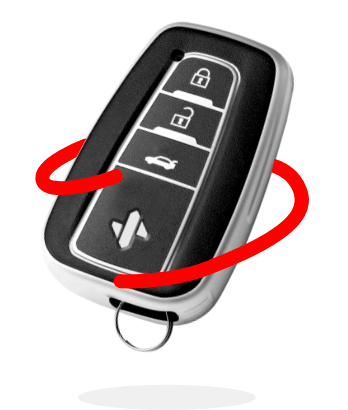When it comes to mortgages, homeowners insurance plays a crucial role for both the homeowner and the lender. It provides financial protection in case of property damage or loss, ensuring the investment is safeguarded.
In this post, we’ll dive into the key aspects mortgage lenders need to know about homeowners insurance and its implications for their lending process.
UNDERSTANDING HOME INSURANCE
For mortgage lenders, understanding the basics of homeowners insurance is essential. As you know, homeowners insurance is a type of insurance policy that provides coverage for a residential property and its contents. It offers financial protection against various risks – including damage caused by fire, theft, natural disasters, and liability for accidents that occur on the insured property.
Different types of coverage options are available — dwelling coverage, personal property coverage, liability coverage, and additional living expenses coverage. Each coverage type serves a specific purpose and should be carefully considered to ensure adequate protection for both the homeowner and the lender.
KEY CONSIDERATIONS FOR MORTGAGE LENDERS
Requirement of Homeowners Insurance for Mortgage Approval
In most cases, homeowners insurance is a prerequisite for mortgage approval. Lenders require borrowers to have an active insurance policy that covers the property for the duration of the mortgage. This requirement protects the lender's financial interest in the property and ensures that the property is adequately protected against potential risks.
The Role of the Lender in Ensuring Insurance Compliance
Mortgage lenders have a responsibility to ensure that the borrower maintains continuous insurance coverage throughout the life of the loan. Lenders may request proof of insurance before closing the loan and periodically verify insurance coverage during the loan term. This helps protect the lender's investment in the property and minimizes potential financial risks.
Verification of Insurance Coverage During the Loan Process
During the loan process, mortgage lenders typically verify the borrower's insurance coverage to confirm that it meets the lender's requirements. This verification process includes checking the coverage limits, deductibles, and the named insured on the policy. Lenders may also require borrowers to name them as an additional insured or mortgagee on the policy.
FACTORS AFFECTING INSURANCE PREMIUMS
Various factors can influence homeowners insurance premiums. Mortgage lenders should be aware of these factors to better understand the costs associated with insurance coverage for a property.
Location-Specific Risks and Their Impact on Premiums
The location of a property can significantly impact insurance premiums. Properties located in high-risk areas prone to natural disasters, such as hurricanes, earthquakes, or floods, may have higher insurance premiums. Lenders should consider these risks when assessing the overall financial viability of a mortgage.
Property Characteristics That Influence Insurance Costs
Certain property characteristics, such as the age of the property, construction materials, and safety features, can affect insurance premiums. For example, older homes may have higher premiums due to potential maintenance issues, while homes with security systems or fire-resistant materials may qualify for discounts.
TIPS FOR HOMEOWNERS TO LOWER THEIR INSURANCE PREMIUMS
Lenders can provide valuable guidance to homeowners on how to lower their insurance premiums. Some tips include increasing deductibles, bundling policies for multiple properties or insurance types, installing safety features like smoke detectors or security alarms, and regularly reviewing and updating the coverage to align with the property's value.
Understanding Insurance Policies
To effectively assess the insurance coverage for a property, mortgage lenders must understand the various components of an insurance policy.
Coverage Limits and Deductibles
Coverage limits determine the maximum amount an insurance policy will pay out for a claim. It’s crucial for lenders to ensure that the coverage limits are sufficient to cover the property's value and potential liabilities. Deductibles, on the other hand, represent the amount the homeowner must pay out of pocket before the insurance coverage kicks in.
Additional Endorsements and Riders
Homeowners can add additional endorsements or riders to their insurance policies to expand coverage. These may include coverage for specific risks or valuable personal property, such as jewelry or artwork. Lenders should be aware of any additional endorsements or riders to ensure that the policy adequately covers all potential risks.
Exclusions and Limitations
Insurance policies also have exclusions and limitations that specify what’s not covered or has limited coverage. Lenders should carefully review these exclusions and limitations to understand potential gaps in coverage that could impact the property's protection and financial risk.
THE ESCROW ACCOUNT
An escrow account plays a vital role in managing homeowners insurance payments for mortgage lenders.
Role of the Escrow Account in Managing Insurance Payments
Mortgage lenders often require homeowners to contribute a portion of their monthly mortgage payment towards an escrow account. The lender then uses the funds from the escrow account to pay the insurance premiums and property taxes on behalf of the homeowner. This ensures that the insurance premiums are paid timely and helps prevent any lapses in coverage.
How Mortgage Lenders Handle Insurance Premiums through Escrow
When homeowners make their monthly mortgage payments, a portion of that payment is set aside in the escrow account to cover the insurance premiums. The lender is responsible for making the insurance premium payments from the escrow account when they are due. Mortgage lenders should ensure that the escrow account is properly managed and that there are sufficient funds available to pay for the insurance premiums. Lenders should also periodically review the escrow account to adjust the monthly contribution if necessary, based on changes in insurance premiums.
Homeowners insurance is an essential aspect of the mortgage lending process. Mortgage lenders must understand the key considerations and factors related to homeowners insurance to protect their investments and minimize financial risks. By ensuring insurance compliance, verifying coverage, and understanding the components of insurance policies, lenders can navigate the complexities of homeowners insurance more effectively.
Want to help your customers get the best insurance options? Get in touch with SimplyIOA today.










